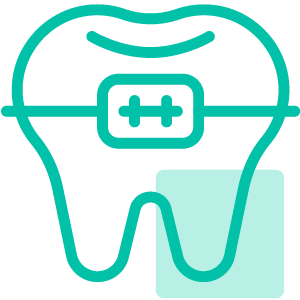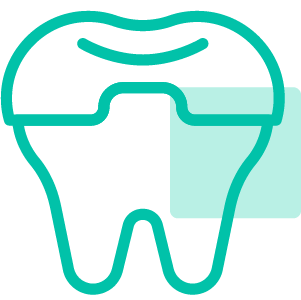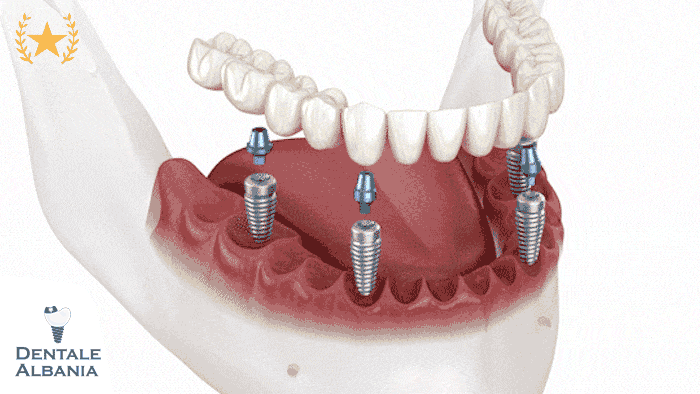What Are Immediate Load Dental Implants and How Do They Work?

Immediate load dental implants, also referred to as same-day implants, teeth-in-a-day, or immediate function implants, are a modern solution that allows patients to walk out of the clinic with a full set of functional teeth within just one appointment. Unlike traditional dental implants, which require a healing period of several months between implant placement and crown fitting, immediate load implants combine both steps into a single procedure. This innovative approach significantly shortens treatment time while enhancing patient comfort, confidence, and convenience.
The term “immediate load” refers specifically to the placement of a temporary prosthetic tooth (or teeth) onto a dental implant within 24–48 hours after the implant is surgically placed into the jawbone. The key to success in immediate loading lies in achieving primary stability — the secure anchoring of the implant in the bone at the time of placement. When the bone is dense and healthy enough, and the insertion torque is sufficient (usually ≥30–45 Ncm), the implant is stable enough to support a temporary crown or bridge immediately.
While the temporary restoration allows the patient to eat, speak, and smile normally right away, a permanent crown or bridge is typically placed 3–6 months later once full osseointegration (bonding of bone to implant) has occurred.
What Is Immediate Loading?
Immediate loading is the process of placing a prosthetic restoration (like a crown or bridge) on an implant within 48 hours of surgery. It bypasses the traditional 3- to 6-month waiting period. As long as the implant is stable and the occlusal forces are controlled, immediate function is possible and safe in many cases.
What Is an Immediate Load Implant vs Immediate Implants?
It’s important to understand the difference:
- Immediate implant placement means placing the implant right after tooth extraction.
- Immediate loading refers to placing the prosthetic tooth (crown/bridge) onto the implant within a day or two of surgery.
Both can be done together, but immediate loading specifically focuses on the restorative phase, not just implant placement.
Immediate Loading for Missing Teeth: Who Is It For?
This treatment is ideal for patients who have lost a tooth recently or need multiple extractions. Rather than waiting months with a gap or wearing a removable denture, patients can benefit from a fixed, aesthetic solution immediately after surgery. It’s especially helpful for those needing front-tooth restorations for smile aesthetics or full-arch solutions to restore function and appearance right away.
How Is the Immediate Loading Implant Procedure Performed?
The immediate loading implant procedure is carefully structured to ensure speed without compromising safety or long-term success. Thanks to advancements in imaging, materials, and digital workflows, patients can now enjoy a seamless, single-visit transformation. However, this streamlined treatment still follows a rigorous clinical protocol to ensure the implant bonds effectively with the jawbone and supports a functioning prosthetic from day one.
The process typically starts with a comprehensive consultation, where a dentist evaluates the patient’s oral health, bone structure, and medical history. Advanced diagnostic tools like CBCT scans (Cone Beam Computed Tomography) are used to assess the bone volume and density. This step is essential to determine whether the patient is a suitable candidate for immediate loading.
Once confirmed, the procedure is scheduled, and the dental team prepares a custom treatment plan that includes the selection of implant type, placement angle, and the design of the temporary prosthetic teeth.
What Is the Step-by-Step Process of an Immediate Load Implant?
- Pre-Planning and Imaging
- CBCT scans and intraoral exams are conducted to evaluate bone health
- Digital impressions or 3D scans may be used to design the prosthesis ahead of surgery
- Patient is pre-medicated if needed and sedation options are reviewed
- Tooth Extraction and Osteotomy
- Any teeth that need to be removed are extracted carefully
- The implant site (osteotomy) is prepared using specialized drills to avoid bone trauma
- Bone condensing may be used in softer bone cases to enhance stability
- Implant Insertion and Achieving Primary Stability
- The dental implant is inserted with torque values typically above 30–45 Ncm
- High primary stability is essential to support the temporary restoration
- Stability may be tested using torque wrenches or resonance frequency analysis (RFA)
- Placement of the Temporary Prosthesis
- A prefabricated or same-day milled crown or bridge is attached
- It is often out of direct occlusion (bite) to avoid excessive pressure during healing
- In full-arch cases, 4 to 6 implants may support a full set of teeth
- Healing and Final Restoration
- While the patient already enjoys a functional temporary tooth or arch, the implants continue to osseointegrate over 3–6 months
- After this, a custom-designed permanent prosthesis replaces the temporary one
- The final prosthesis is more durable, aesthetic, and long-lasting
This one-stage technique dramatically simplifies the traditional implant workflow, reducing surgical interventions and minimizing patient discomfort while offering an immediate improvement in function and appearance.
Are You a Candidate for Immediate Load Dental Implants?

Not every patient is a suitable candidate for immediate load dental implants. While the treatment offers remarkable benefits in speed and convenience, its success depends heavily on individual anatomical and health factors. Careful patient screening is critical to ensure the implant achieves primary stability and fuses properly with the jawbone without complications.
Generally, ideal candidates for immediate loading are individuals who have adequate bone density, healthy gums, and are in good overall health. If you’ve recently lost a tooth or need an extraction, acting quickly increases the likelihood that your bone and soft tissue are in optimal condition for same-day implants.
On the other hand, patients with systemic health issues (like uncontrolled diabetes), active infections, poor bone quality, or habits like heavy smoking may not be ideal candidates. However, every case is unique — which is why a professional evaluation is necessary.
What Dental Assessments Are Done Before an Immediate Load Implant?
To determine your eligibility, the dental team performs a series of diagnostic assessments, including:
- CBCT Scan (Cone Beam CT): Offers a 3D view of your bone structure, density, and volume
- Periodontal Evaluation: Checks gum health and rules out infections or gum disease
- Implant Stability Testing: Measures bone resistance and ensures the implant can withstand immediate function
- Medical History Review: Assesses any systemic conditions, medications, or lifestyle factors that might affect healing
- Occlusion and Bite Analysis: Evaluates how forces are distributed when you chew — critical for immediate loading success
These assessments ensure that only well-qualified patients move forward with the immediate loading approach.
Can You Get Immediate Dental Implants If You’re Missing Multiple Teeth?
Yes — in fact, full-arch immediate loading is a popular solution for patients missing multiple or all teeth. In such cases, 4 to 6 implants are typically placed in strategic positions to support a full set of fixed teeth.
This technique is commonly known as Teeth in a Day or All-on-4/All-on-6, and it allows patients to leave the clinic with a brand-new, functional smile — even after having several teeth extracted during the same visit.
Keep in mind that the prosthetic is often temporary at first, with a permanent bridge placed after healing. Still, the ability to chew, speak, and smile immediately after surgery is a major advantage for many patients.
What Are the Advantages of Immediate Load Dental Implants?
Immediate load dental implants offer several compelling benefits that make them an attractive option for patients who want faster, more comfortable, and aesthetically pleasing tooth replacements. While traditional implants can take months to complete, immediate loading provides a near-instant transformation — often in just one appointment.
For many patients, the ability to leave the dental clinic with new teeth on the same day is life-changing. There’s no need to wear uncomfortable temporary dentures or live with visible gaps in your smile for weeks or months. The immediate improvement in confidence, function, and appearance can be incredibly empowering.
Here are some of the standout advantages:
- Instant Aesthetic Improvement
You walk out of the clinic with fixed teeth — no gaps, no awkward removable dentures. - Fewer Dental Visits
The process is streamlined into fewer appointments, which saves time and reduces travel for those with busy schedules or mobility issues. - Faster Recovery and Healing
Since the procedure often involves a flapless technique, it can result in less trauma, less swelling, and quicker healing compared to traditional multi-stage implants. - Simplified Surgical Workflow
Everything — from extraction to implant to temporary tooth — is done in a single surgical session, reducing stress and inconvenience. - Improved Speech and Chewing Right Away
Patients can speak and eat with greater comfort and confidence from day one, unlike traditional approaches that may require weeks of soft foods or adjustments. - High Patient Satisfaction
Studies show that patients report a higher level of satisfaction with immediate loading, particularly when replacing front teeth or full arches.
Why Is “No More Waiting” a Key Benefit?
For many, the traditional dental implant journey — involving multiple surgeries, long waits, and temporary solutions — can be daunting. Immediate loading removes this barrier by offering:
- A smile restoration in one visit
- Less psychological distress from missing teeth
- Elimination of removable dentures during the healing phase
- Improved self-esteem right after surgery
Patients often describe the treatment as transformational — not just for their smile, but for their overall well-being and lifestyle.
What Are the Risks or Limitations of Immediate Load Implants?

While immediate load dental implants offer many benefits, they also come with specific challenges and limitations that both patients and clinicians must carefully consider. Unlike conventional implants that allow time for gradual healing, immediate loading relies heavily on optimal conditions to succeed — and when those conditions aren’t met, the risk of implant failure increases.
The good news? With careful case selection, proper technique, and experienced dental professionals, many of these risks can be minimized. Still, it’s important to understand the potential drawbacks before choosing this fast-track approach.
Are There Any Limitations to Immediate Load Dental Implants?
Yes — immediate loading isn’t appropriate for everyone. The following limitations often apply:
- Requires High Bone Quality and Quantity
Patients with low bone density or volume may not achieve the necessary primary stability for immediate loading. - Primary Stability Must Be Achieved
Without sufficient torque (generally 30–45 Ncm), the implant may not be secure enough to support a temporary crown. - Limited Use in High-Risk Patients
Conditions like uncontrolled diabetes, heavy smoking, bruxism (teeth grinding), or poor oral hygiene can compromise healing and long-term success. - Not Ideal for All Tooth Positions
Single implants in areas with high bite pressure (molars) or angled occlusion may not be suitable for immediate loading. - Higher Chair-Side Time
Although the total treatment time is shorter, the initial surgery may take longer and require more precision.
What Are the Risks and Drawbacks of an Immediate Load Implant?
Even when performed under ideal conditions, there are still some risks to be aware of:
- Early Implant Failure
If the implant fails to integrate with the bone due to movement or overload, it may require removal and replacement. - Prosthetic Complications
Loosening of screws, fracture of the temporary crown, or occlusion adjustments may be needed during healing. - Esthetic Compromises in Complex Cases
If the soft tissue does not adapt well around the provisional crown, final esthetic results may be less than optimal. - Increased Cost in Revision Cases
If immediate loading fails and revision is needed, it could add time and cost to the overall treatment.
While these drawbacks sound intimidating, it’s important to remember that immediate load implants still show high survival rates when all clinical criteria are met and the procedure is handled by skilled professionals.
What Implant System Is Best for Immediate Loading Success?
Choosing the right dental implant system is crucial for the success of immediate loading. Unlike traditional implants where healing time allows for bone integration over months, immediate loading demands a system that can achieve high primary stability, integrate quickly, and support a prosthetic load almost immediately.
While many dental implant brands exist, only a few have been clinically validated for predictable outcomes in immediate loading scenarios. These systems are engineered with specific features — such as thread design, surface texture, and implant shape — that enhance grip, reduce micromovement, and accelerate osseointegration.
Importance of Choosing the Right Implant System
Here are key features that define a strong implant system for immediate loading:
- Tapered (Root-Form) Design
A tapered shape mimics the natural tooth root and helps condense the surrounding bone during placement, increasing initial torque and stability — essential for immediate loading. - Aggressive Thread Pattern
Implants with deep, self-tapping threads cut efficiently into bone, offering greater anchorage even in softer or compromised bone. - Surface Treatment Technology
Roughened or microtextured surfaces promote faster osseointegration by encouraging bone growth around the implant. This reduces the window for complications. - Platform Switching and Connection Stability
Systems with secure implant-abutment connections reduce the risk of movement and provide better long-term load distribution. - Variety in Length and Diameter Options
Allows the clinician to adapt to patient-specific anatomy — shorter, wider implants may be useful in areas with limited bone height or volume.
Some widely used and trusted systems for immediate loading include:
- NobelActive (by Nobel Biocare) – Known for its expanding body and apical drilling blades, excellent for achieving torque in soft bone.
- Straumann BLX – Designed specifically for immediate protocols, with high primary stability in various bone types.
- Implant Direct Legacy 2 – Combines an aggressive thread design and dual-function platform for stability and prosthetic flexibility.
- Dentsply Sirona Astra Tech EV – Offers a conical connection with excellent soft tissue response and stability.
Ultimately, the choice of implant system should be tailored to the individual’s bone quality, prosthetic plan, and surgical approach — but working with a clinically proven system greatly increases the odds of long-term success.
Frequently Asked Questions About Immediate Load Dental Implants

What Are the Benefits of an Immediate Load Implant?
Immediate load dental implants — also called “teeth in a day” — have revolutionized the implantology field by offering functional, aesthetic, and psychological benefits that traditional implants often can’t match in terms of speed and convenience.
Below are the key benefits that make immediate load implants a preferred choice for many patients and clinicians:
- Same-Day Smile Transformation
Patients receive a temporary fixed crown or bridge on the day of implant surgery, meaning they walk out with teeth, not gaps or removable dentures. - Shorter Treatment Timeline
Traditional implants can take 6–12 months from extraction to final restoration. Immediate load implants drastically reduce that timeline to days or even hours. - Improved Patient Comfort
Since there’s no need for a removable denture during healing, patients experience less irritation, speech difficulty, or dietary restrictions. - Better Preservation of Gum and Bone Tissue
Immediate placement and loading can help maintain natural contours of soft and hard tissue, avoiding the resorption that typically happens after extractions. - Reduced Number of Surgeries
The procedure often combines extraction, implant placement, and restoration in a single surgical visit, eliminating the need for multiple interventions. - Higher Patient Satisfaction
Patients appreciate not only the speed but also the aesthetic outcome — especially when replacing teeth in the visible “smile zone.” - Enhanced Functionality Early On
While care is taken to avoid overloading the implants during the healing phase, patients are still able to eat, speak, and smile naturally — often within 24 hours. - Psychological Boost
For many, losing a tooth is traumatic. Immediate restoration helps restore confidence quickly and prevents emotional stress linked to a compromised smile.
In short, immediate load implants provide life-changing convenience without compromising long-term results — when case selection and technique are properly managed.
What Is the Process of an Immediate Load Implant?
The process of receiving an immediate load implant is fast-paced but requires careful planning and clinical precision. Unlike traditional implants that involve several months of healing between steps, immediate load implants are designed to complete key stages — from tooth extraction to temporary restoration — in one visit or within 24–48 hours.
Here’s a step-by-step breakdown of how the procedure typically unfolds:
- 1. Consultation and Diagnostic Imaging
The first step involves a comprehensive consultation, including X-rays and a CBCT scan to assess bone density, quantity, and overall suitability for immediate loading. The dentist also reviews medical history and identifies any risk factors like smoking, diabetes, or bruxism. - 2. Treatment Planning
Digital planning tools are often used to determine the exact position, angle, and depth of the implant. The design of the temporary prosthesis may be prepared in advance using CAD/CAM technology. - 3. Tooth Extraction (If Needed)
If the tooth is still present, it is atraumatically extracted to preserve as much bone and soft tissue as possible. The area is cleaned thoroughly to avoid infection. - 4. Implant Placement
The implant is inserted immediately into the fresh extraction site or prepared bone. A high insertion torque (usually 30–45 Ncm) is necessary to achieve primary stability, which is essential for immediate loading. - 5. Provisional Restoration
A temporary crown or bridge is placed within the same appointment or within 24 hours. It is typically designed to avoid direct biting pressure and is adjusted to stay out of occlusion during healing. - 6. Healing and Osseointegration
While patients enjoy immediate aesthetics and function, the implant still requires time to fuse with the bone. Healing typically takes 3–6 months, during which the patient must follow a soft diet and avoid excess stress on the implant. - 7. Final Prosthesis
After osseointegration is confirmed, the temporary restoration is replaced with a custom-made permanent crown or bridge, crafted to match the color, shape, and bite of your natural teeth.
This streamlined process is ideal for patients who value speed, aesthetics, and reduced downtime, but it demands precise execution and careful case selection to ensure success.









